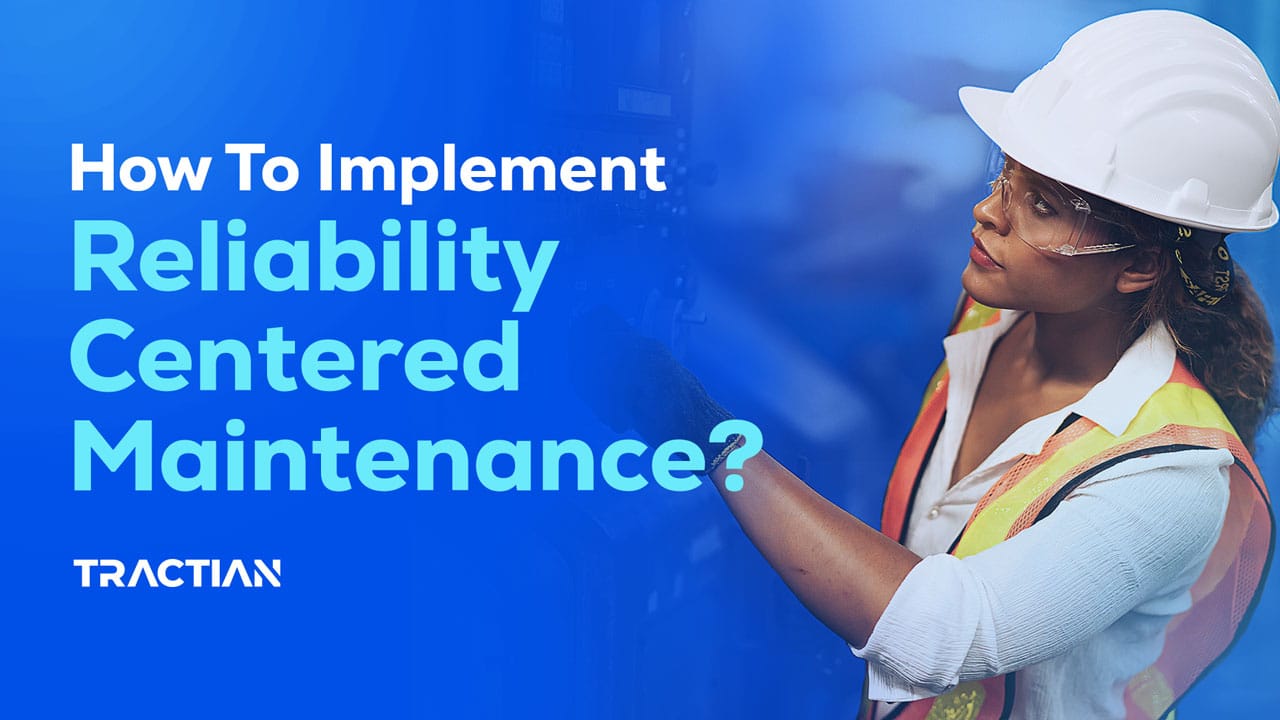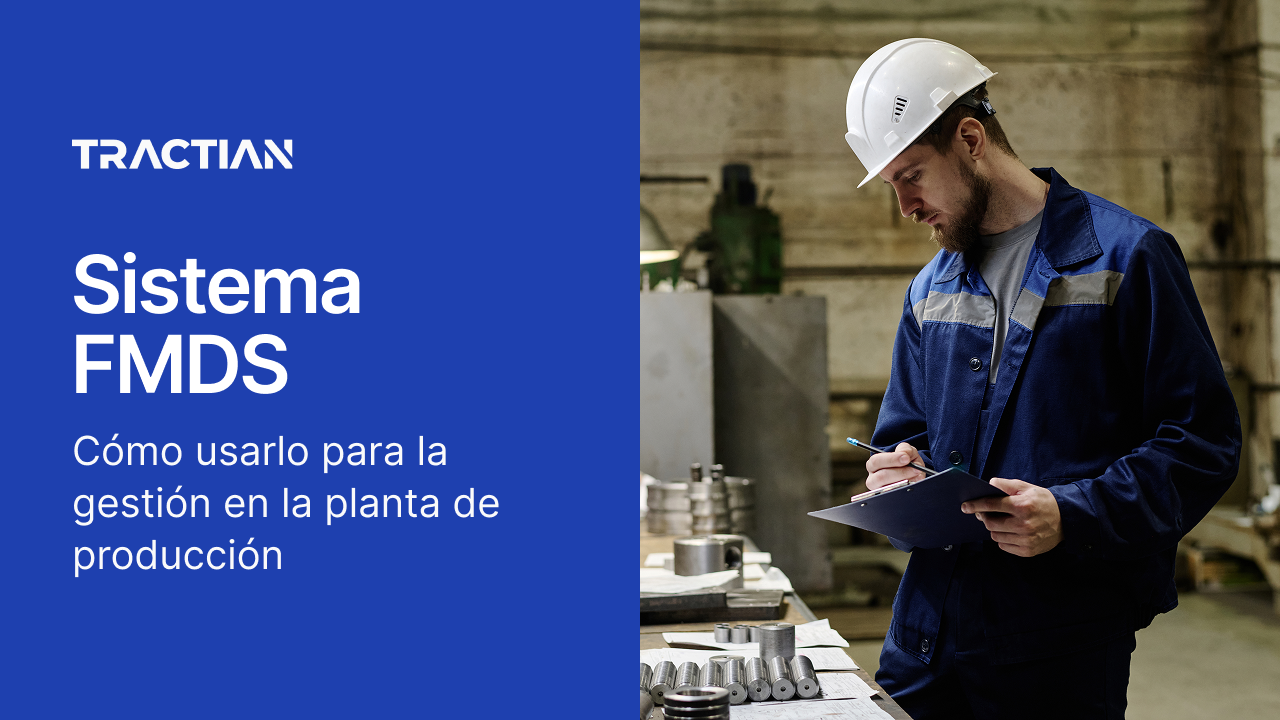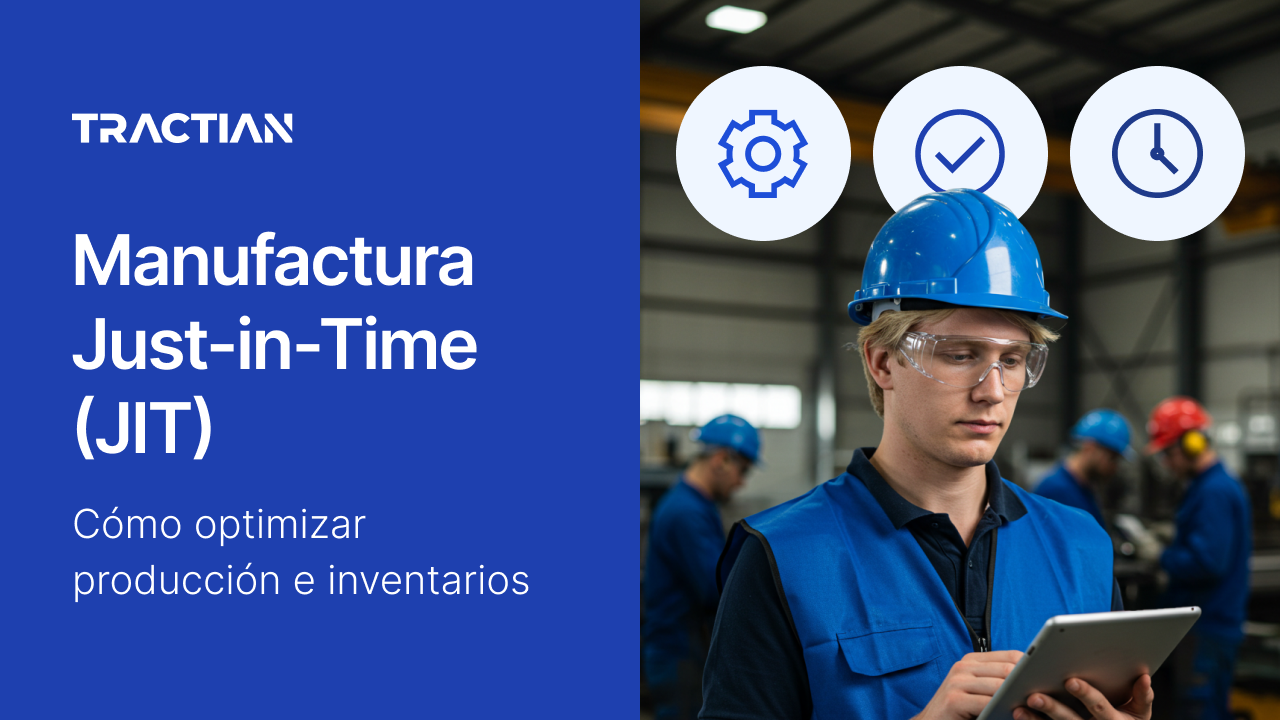Ever had a crucial piece of equipment fail at the worst possible moment? Unexpected breakdowns can wreak havoc on production schedules and budgets. That’s where Reliability Centered Maintenance (RCM) steps in.
Developed in the late 1960s for aviation to ensure peak performance and safety, it has become a cornerstone of maintenance strategies across industries.
IRCM is no longer just about fixing equipment when it breaks; it's about integrating advanced technologies, such as AI and IoT, to predict failures and optimize preventive maintenance strategies. By leveraging these technologies, businesses can avoid costly downtime, extend the lifespan of their assets, and achieve significant cost savings.
Here’s the key: By understanding how equipment fails and prioritizing preventive measures, RCM helps businesses avoid costly downtime and extend the lifespan of their assets. This translates to smoother operations and significant cost savings.
Although it’s been around for years, reliability-centered maintenance (RCM) is still being used today. But what about this strategy is so crucial to the maintenance industry?
What Is Reliability Centered Maintenance (RCM)?
Reliability-Centered Maintenance (RCM) is a systematic, data-driven approach to maintenance management. It focuses on optimizing maintenance activities to ensure asset availability and reliability while minimizing costs. Unlike traditional methods, RCM tailors maintenance tasks based on an asset's criticality, failure modes, and the potential consequences of those failures.
Over the years it’s evolved into one of the most efficient strategies for industries to apply to their equipment. But, these industries also found out a few things along the way.
They realized that in maintenance, there’s a difference between doing what has to be done and what can be done. RCM helps managers choose one strategy for each asset, aiming at preserving its performance standards.
Imagine a maintenance plan designed specifically for each piece of equipment in your facility. That’s the core idea behind RCM. It’s a systematic process that analyzes equipment functions, failure modes, and consequences to create a tailored maintenance strategy for maximum efficiency.
Unlike traditional “fix-it-when-it-breaks” approaches, this approach prioritizes preventive maintenance.
By focusing on critical equipment functions and potential failures, Reliability Centered Maintenance helps businesses achieve three key objectives:
- Enhanced Equipment Reliability: it minimizes unexpected downtime by proactively addressing potential issues.
- Improved Safety: By prioritizing critical functions, this approach ensures equipment operates safely and avoids catastrophic failures.
- Reduced Maintenance Costs: Focusing on targeted preventive measures avoids unnecessary maintenance tasks, saving time and money.
RCM doesn’t just tell you what to do; it guides you in applying the right maintenance techniques at the right time for each piece of equipment.
If you want to know more about FMEA implementation, check out our related article: Mechanical Failures: Best Practices for Prevention
The Four Pillars of RCM
RCM hinges on four key steps that guide effective maintenance strategies:
- Identify Equipment Functions: Start by defining what each piece of equipment does and how well it should perform. This clarifies what constitutes a failure and prioritizes maintenance based on function.
- Pinpoint Functional Failures: Once you know the function, identify how it can fail to meet performance standards. This shift from reactive repairs to understanding failure modes is crucial.
- FMEA — Analyze Failure Modes & Effects: This systematic analysis assesses the severity, likelihood, and detectability of potential failures. By understanding these factors, you can prioritize which failures pose the biggest risk.
- Proactive Maintenance Decisions: Leveraging the insights from the previous steps, choose the most effective maintenance tasks (predictive, preventive, corrective) to prevent failures or minimize their impact. This ensures cost-effective maintenance that maximizes equipment reliability.
Each step builds on the last, creating a comprehensive program tailored to your specific equipment needs. By following these steps, you can transform your maintenance from reactive to proactive, boosting equipment reliability and overall operational efficiency.
RCM vs. TPM: Key Differences
Reliability Centered Maintenance (RCM) and Total Productive Maintenance (TPM) are both prominent maintenance methodologies, yet they differ significantly in their approaches and objectives.
Understanding these differences is crucial for organizations to decide which strategy aligns best with their operational goals.
Let’s take a deeper dive:
RCM focuses primarily on ensuring that equipment continues to perform its intended function in its current operating context.
It is highly systematic, emphasizing the identification of functions, failures, and maintenance needs based on the likelihood and impact of failures.
The goal? To increase machine availability and reliability through more effective maintenance strategies tailored to each piece of equipment’s risk and failure modes.
Overall, the main focus of RCM is to reduce the life cycle cost (LCC) of an asset — which is the sum of all costs with the equipment, from its first specification until its decommissioning, uninstallation, and disposal.
Conversely, TPM aims to maximize equipment effectiveness through comprehensive maintenance involving all employees from operators to maintenance personnel.
It focuses on maintaining and improving equipment reliability, production output, and safety.
TPM’s key objectives? Fostering a sense of ownership among all employees, preventing any loss (zero accidents, defects, and failures), and ensuring that maintenance efforts support the organization’s overall productivity.
Understanding these differences can help your organization choose the most appropriate maintenance strategy.
Each has its merits and can be instrumental in different operational contexts.
Is your organization more aligned with the detailed, risk-based approach of RCM, or would the inclusive, productivity-focused strategy of TPM better serve your goals?
Remember: this decision will significantly influence your maintenance operations and ultimately your business success.
The Main Goal of RCM
Overall, the main focus of RCM is to reduce the life cycle cost (LCC) of an asset.
The LCC is the sum of all costs with the equipment, from its specification, installation, operation, and maintenance until its decommissioning, uninstallation, and disposal. Because of how it takes LCC into account, reliability centered maintenance is one of the most profitable maintenance models that exists today.

Additional key principles of Reliability Centered Maintenance include:
- Identifying and prioritizing critical systems and equipment that significantly impact safety, production, or operations helps organizations allocate maintenance efforts.
- Function-oriented analysis learns the functions of each asset, and identifies potential failure modes that could prevent those functions from happening.
- Failure Mode and Effects Analysis (FMEA) is used to analyze failure modes, their causes, and their potential consequences. This analysis helps determine how critical each failure mode is, and enables companies to mitigate risks.
- Proactive Maintenance Approach: Following a proactive approach to maintenance helps us prevent failures before they occur. It encourages the use of preventive maintenance, predictive maintenance techniques, and condition monitoring to detect and address potential issues in advance.
- Optimization of Maintenance Strategies: Various factors are considered to determine the optimal mix of maintenance tasks. These include failure consequences, maintenance costs, and the potential benefits of different maintenance approaches.
- Continuous Improvement: It’s an iterative process that encourages continuous improvement. By monitoring and analyzing the performance of maintenance activities, we can enhance asset reliability and performance over time.
Overall, RCM services ensure that maintenance efforts are targeted, cost-effective, and aligned with the risk profiles of assets.
The Five Basic Principles of RCM
Reliability Centered Maintenance operates on five foundational principles that guide the development of an effective maintenance program, closely aligned with organizational goals.
- Preserve System Function: The primary goal here is to ensure that systems continue to perform their intended functions in their present operating context. How effectively are we maintaining essential system capabilities?
- Identify Failure Modes: Reliability-Centered Maintenance requires a detailed analysis of how systems might fail. This involves understanding different failure modes to preemptively address potential issues. Are we fully aware of what could go wrong?
- Prioritize Based on Risk: Not all failure modes pose the same risk to operations. RCM prioritizes maintenance tasks based on the risk and impact of failure. How are we prioritizing maintenance tasks to mitigate risks most effectively?
- Choose Appropriate Tasks: Once risks are identified and prioritized, this approach focuses on selecting the most appropriate maintenance tasks to address these risks. Are the chosen tasks the best fit for the risks identified?
- Sustain Maintenance Program Effectiveness: The effectiveness of a maintenance program is monitored and adjusted over time to ensure it continues to meet the organization’s goals. How regularly are we reviewing and improving our maintenance processes?
By adhering to these principles, Reliability-Centered Maintenance helps organizations develop a maintenance strategy that not only improves reliability and safety but also optimizes maintenance costs and enhances overall operational efficiency.
Implementing an RCM Program: A Step-by-Step Guide
Transforming your maintenance strategy with RCM requires a structured approach. Here’s a breakdown of the key steps:

1. Select Equipment: Prioritize which equipment will benefit most from RCM. Here’s a tip: use a criticality matrix to consider safety, legal, and economic factors.
2. Identify Functions: Define what each piece of equipment does and how well it should perform. This clarifies what constitutes a failure and prioritizes maintenance based on function.
3. Identify Functional Failures: How can each piece of equipment fail to meet its intended function? Shift from reactive repairs to understanding these failure modes.
4. Conduct FMEA: This analysis assesses the severity, likelihood, and detectability of potential failures. It helps prioritize which failures pose the biggest risk.
5. Choose Maintenance Tasks: Select the most effective maintenance strategies (predictive, preventive, corrective) to prevent failures or minimize their impact. Consider the cost-effectiveness of each approach.
6. Continuously Improve: Regularly assess and refine your RCM program. Gather feedback from your team and experts to identify areas for improvement.
Key to Success
Cross-functional teams with expertise in operations, maintenance, and engineering are crucial for a successful implementation.
Strong top management support ensures the resources and commitment needed to see the program through to completion.
Why? A LinkedIn survey by O’Hanlon, director of the Reliability Leadership Foundation, found nearly half (48%) of RCM failures stem from cultural resistance within organizations.
By following these steps and fostering collaboration, you can transform your maintenance strategy from reactive to proactive, boosting equipment reliability and overall operational efficiency.
Technologies Enhancing RCM Strategies
RCM meets cutting edge with the help of modern technologies like IoT, AI, and predictive analytics.
These tools supercharge traditional maintenance by:
- Real-time monitoring: IoT sensors track equipment health (vibration, temperature) in real-time, allowing maintenance teams to spot issues before breakdowns occur.
- Predictive maintenance: AI analyzes sensor data to predict equipment failures and recommend targeted interventions, like we explained in our wind turbine before.
- Data-driven decisions: Sophisticated software centralizes data from sensors and maintenance tasks, creating a clear picture of equipment health. This allows for informed decisions about repairs and resource allocation.
Measuring the Success of RCM Initiatives
So, how do you know your Reliability-Centered Maintenance strategy is working? Here are key metrics to track:
- Equipment Uptime: This measures how often equipment is available for production, not sidelined by breakdowns. High uptime indicates successful maintenance strategies.
- Maintenance Costs: Track how much you’re spending on maintenance compared to your budget. Effective RCM reduces unnecessary repairs and keeps costs in line.
- Mean Time Between Failures (MTBF): This metric shows how long equipment operates between failures. An increasing MTBF signifies successful maintenance interventions that prevent breakdowns.
- Safety Incidents: A well-designed Reliability-Centered Maintenance program prioritizes safety by catching issues before they cause accidents. Monitor and aim for zero safety incidents.
But… Setting clear goals is key.
Before implementing this approach, establish measurable goals for these KPIs. This allows you to track progress and adjust your strategy as needed.
Regularly reviewing these metrics ensures your RCM program remains effective and delivers the desired results — maximized equipment performance, reduced downtime, and a safer work environment.
Benefits and Advantages of Reliability Centered Maintenance
Successful implementation of RCM in your facility can benefit the company in many ways.
First, RCM helps enhance equipment reliability by proactively identifying and addressing potential failures. This increased reliability helps teams increase safety as well, reducing the risks of equipment failures that could lead to accidents.
Reliability-centered maintenance also provides a structured framework for maintenance planning and scheduling activities. Companies can use this to create better coordination, resource allocation, and reduce disruptions to production processes.
By focusing maintenance efforts on critical equipment and failure modes, RCM optimizes maintenance activities. This reduces unnecessary costs associated with corrective maintenance while ensuring the effective use of resources.
When appropriate maintenance actions are implemented, RCM helps extend the lifespan of equipment, minimizing premature equipment replacement and associated capital costs. It’s because of these optimized maintenance tasks that increased operational efficiency can be achieved.
Conclusion
There’s nowhere to run: today, maximizing equipment lifespan and minimizing downtime are essential.
The good news? Reliability-Centered Maintenance delivers on both fronts.
By prioritizing preventive maintenance and leveraging data-driven insights, it offers a strategic advantage:
- Reduced Downtime: Proactive maintenance keeps your equipment running smoothly and production flowing.
- Lower Costs: Targeted interventions eliminate unnecessary repairs and optimize resource allocation.
- Improved Efficiency: Real-time data ensures your maintenance efforts are focused where they deliver the most value.
RCM can maximize your equipment potential — and that’s the interesting part here.
By adopting Reliability-Centered Maintenance, you transform your maintenance program from reactive to proactive, laying the foundation for operational excellence and risk management.
Ready to unlock the full potential of your equipment and achieve peak operational efficiency? Count on us and our solutions!
How TRACTIAN Solutions Support RCM
TRACTIAN is an AI-powered platform that supports Reliability-Centered Maintenance by providing real-time monitoring, predictive analytics, and maintenance management capabilities.
With patented fault detection technology, the TRACTIAN Smart Trac sensor is able to monitor vibration, temperature, and oil. This data is then collected and compiled for use by your maintenance and reliability team.
These insights can be used to diagnose asset issues and prescribe the type of intervention that needs to happen in order to get that asset up and running again.
For more on TRACTIAN solutions and to see how they work in your facility, follow this link and chat with one of our experts.




